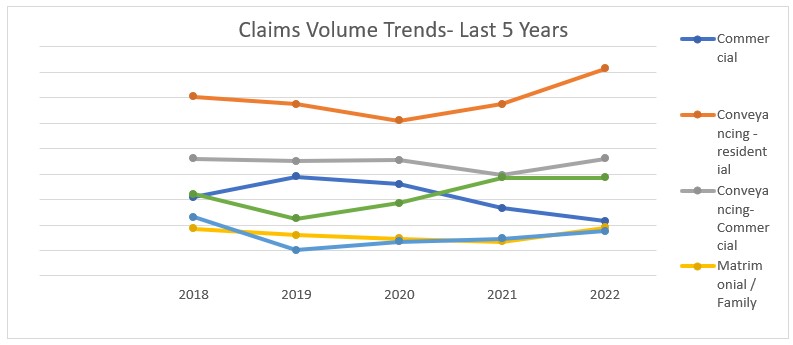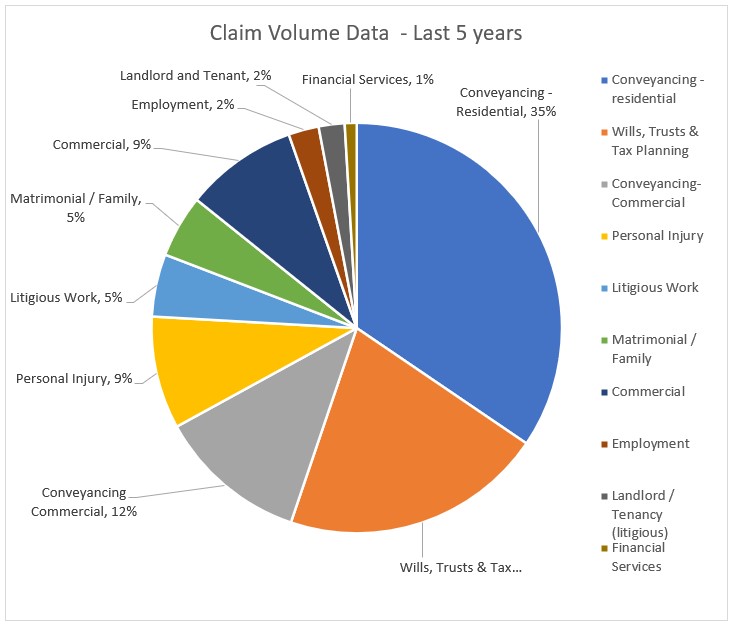Posted by Marc Rowson, a partner at Legal Futures Associate Lockton

Rowson: Solicitors’ insurance does not cover SRA investigation
The outlook for the forthcoming professional indemnity insurance (PII) renewal is a positive one, which is welcome news. That said, there are pockets of the profession that must ensure they are not complacent and take this for granted, as it will remain important to provide a detailed presentation and in a timely manner.
There is much commentary with predictions for what to expect, but the renewal process is just one aspect when considering the PII ecosystem. The claims environment is a further important factor.
Our analysis across the entirety of the Lockton solicitors’ portfolio shows that, while the number of claims made against the profession has continued to decline, the cost of claims has continued to rise. These are some of the issues insurers are identifying.
Wills, trusts and probate
The number of matters notified relating to private client work – wills, trust and probate – remains high, in particular claims over the preparation of wills brought by other family members (ie, disappointed beneficiaries).
We have also seen an increasing number of claims alleging the law firm’s failure to check the capacity of the testator.
Claims between family members are often difficult to resolve and, as a result, can be very expensive for an affected firm.
Conveyancing
Perhaps unsurprisingly, conveyancing claims remain high and are still the most significant contributor in terms of both the number and cost of claims.
The time taken on the part of HM Land Registry (HMRL) to raise requisitions in response to applications to register title, has led to claims against firms. Clients have complained about the absence of any warning about the time HMLR takes to respond to issues and, with the rise in interest rates leading to higher mortgage repayments, this has resulted in claims.
We have seen an increase in the success of fraudulent sellers. There is a clear correlation between this and where the work emanates from, particularly panel/referrer work where a quick and efficient sale is the nucleus of the referrer’s business model. This type of claim tends to be expensive, but also difficult to defend as the loss crystalises immediately.
Commercial real estate
The number of claims relating to commercial real estate has changed trajectory and increased fractionally. The rising value of property, and number of transactions, means the value of these claims has increased.
Cyber-crime
We continue to see law firms suffering cyber-attacks, the cost and time of resolving which has continued to escalate.
Law firms may need to notify the Information Commissioner’s Office and the Solicitors Regulation Authority (SRA) about data breaches, and of course their clients. These issues may impact on their reputation.
For the avoidance of doubt, the SRA’s minimum terms and conditions of insurance – which define the cover your firms has – mean firms are covered for claims by third parties. The firm’s own losses are not covered, however, and this is where cyber insurance may be useful.
The SRA and insurers are live to the growing risks here and the need for a cyber policy is slowly moving from a recommendation to mandatory.
Regulatory issues
The number of regulatory investigations remains high and is likely to increase further in the wake of Axiom Ince.
We suspect that the SRA will become even more active in investigating how law firms are dealing with anti-money laundering, client due diligence and the accounts rules.
The SRA’s increased power to fine firms for cases of economic crime mean that firms may feel a greater impact from regulatory investigations and that power may yet broaden, if its lobbying of ministers proves successful.
The minimum terms and conditions do not provide cover for regulatory investigations.
Claims by practice area
We have seen a consistent pattern in terms of work types that have commonly caused claims. These charts summarise claims frequency against the profession.













Leave a Comment